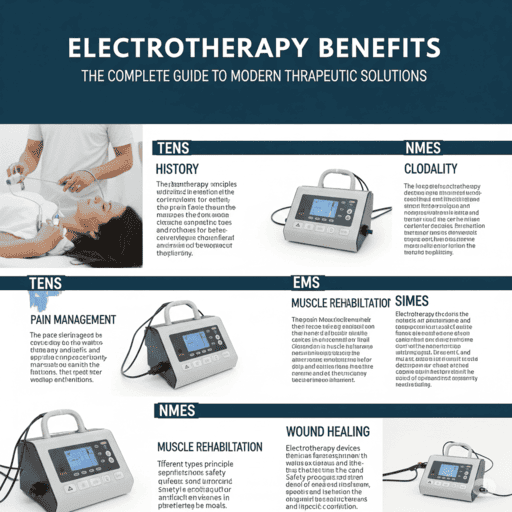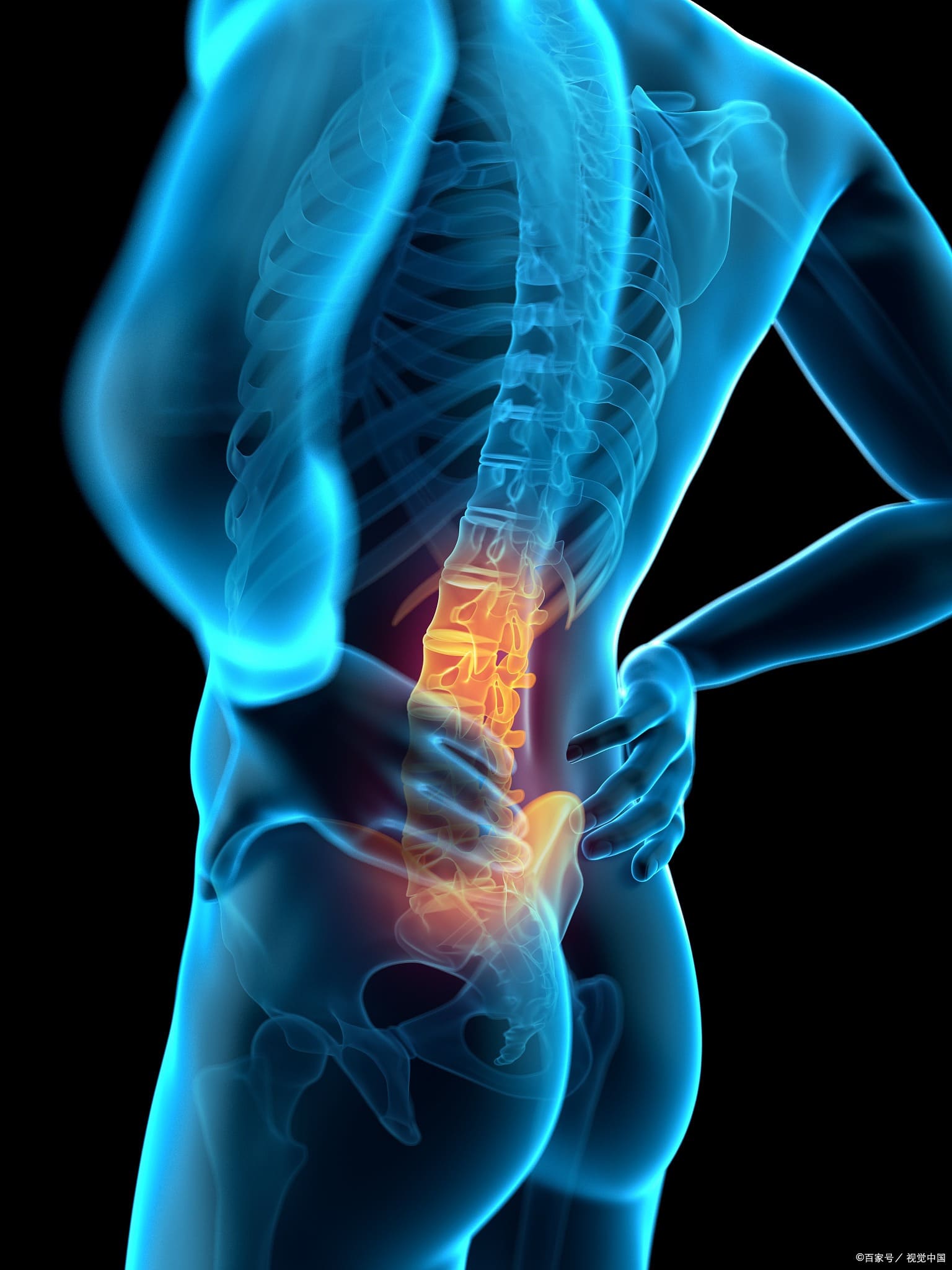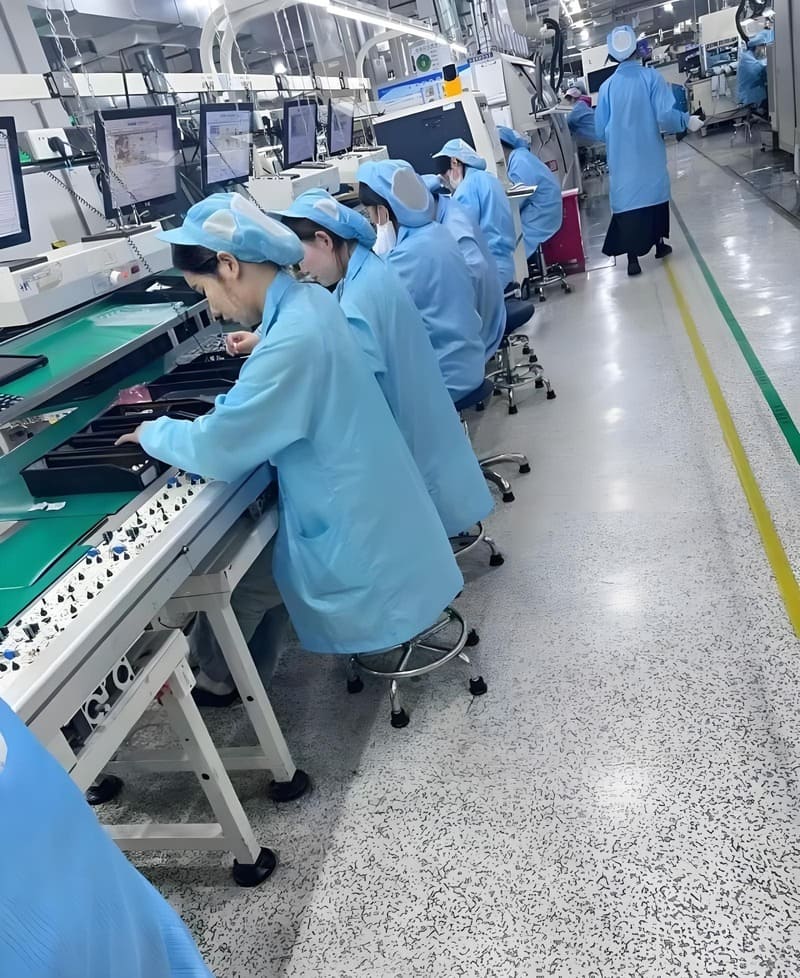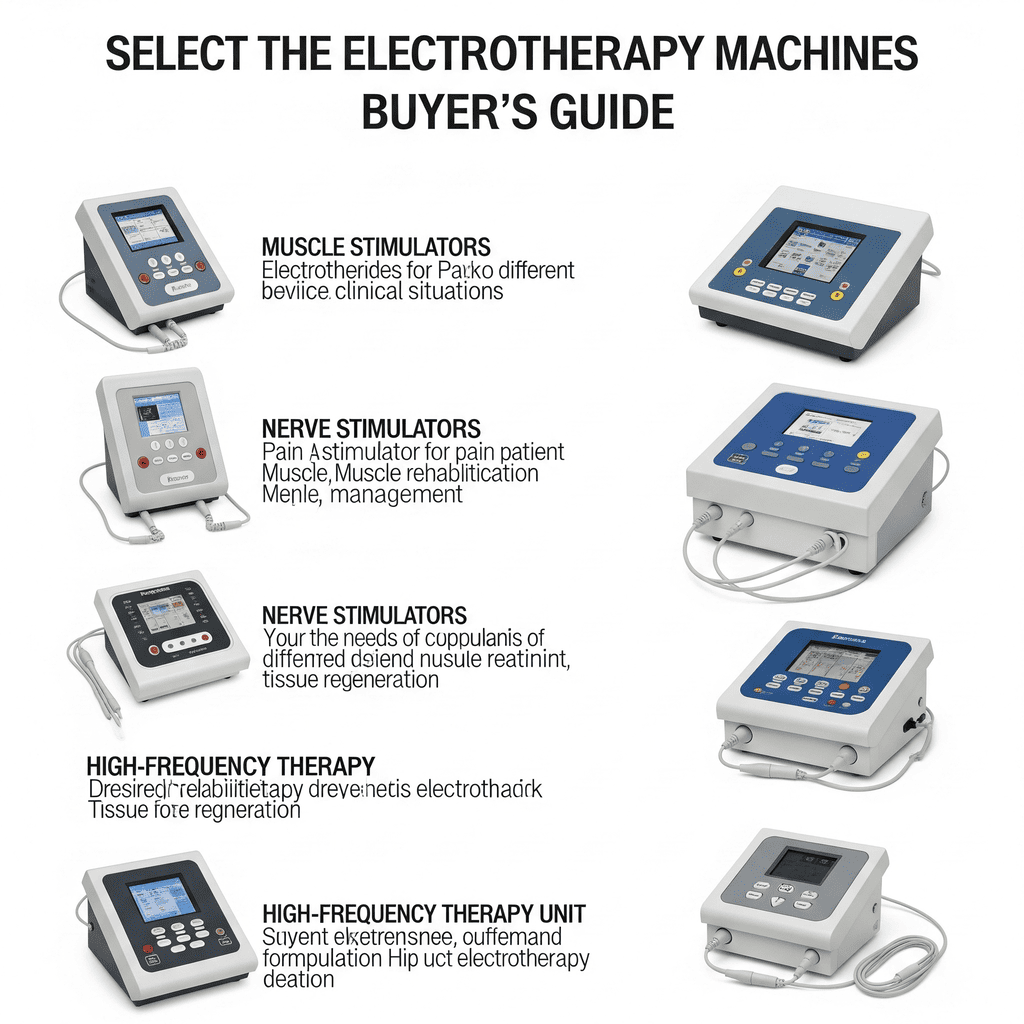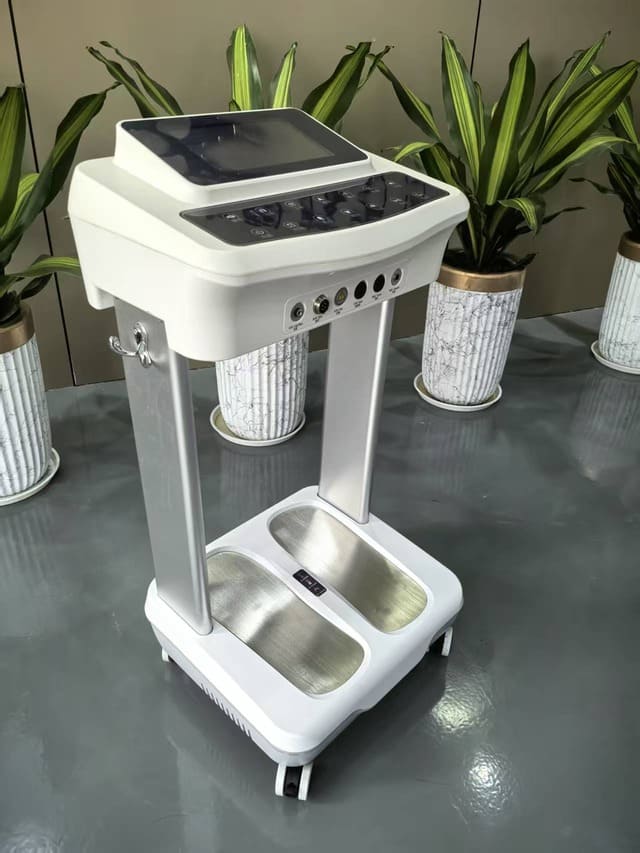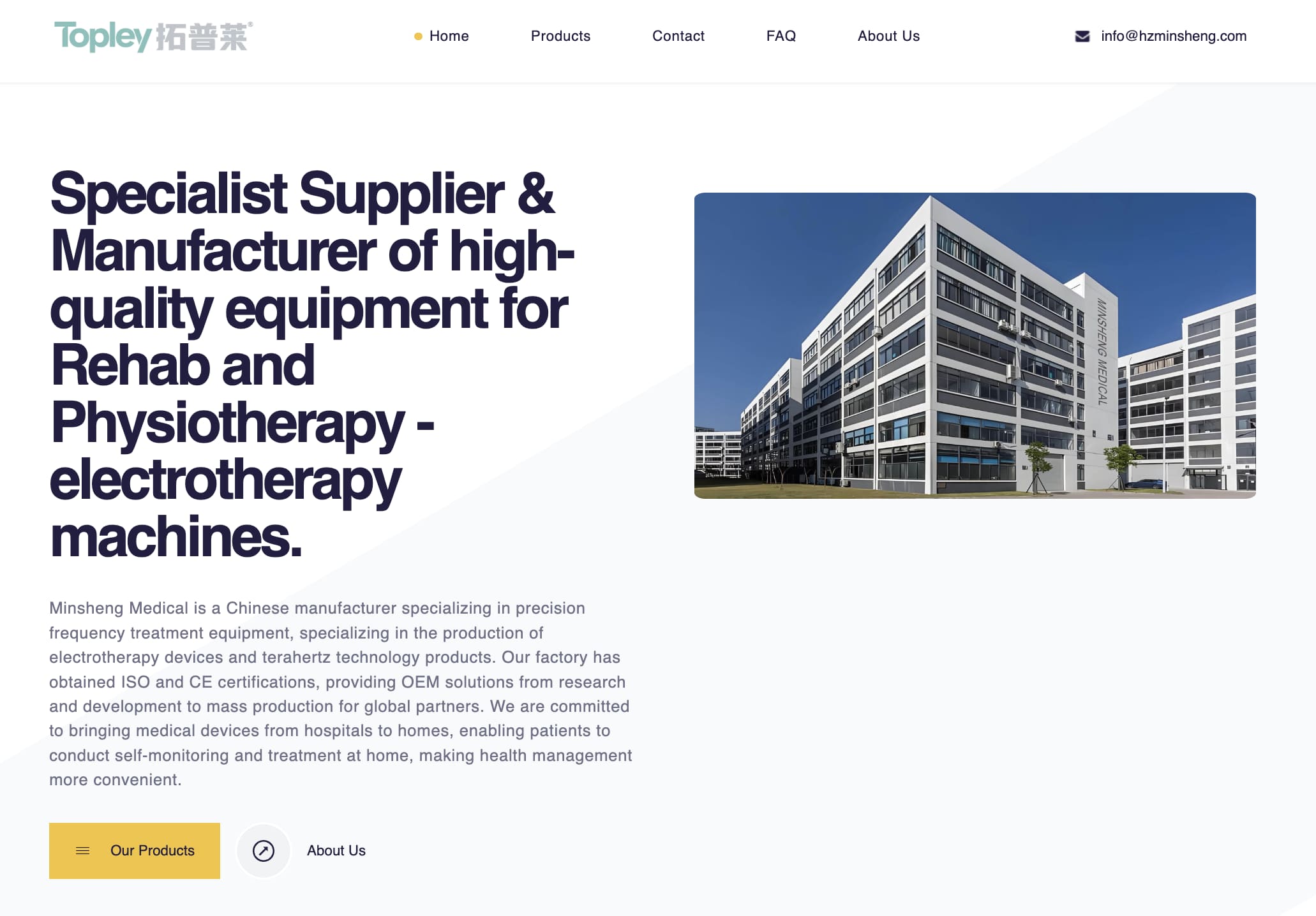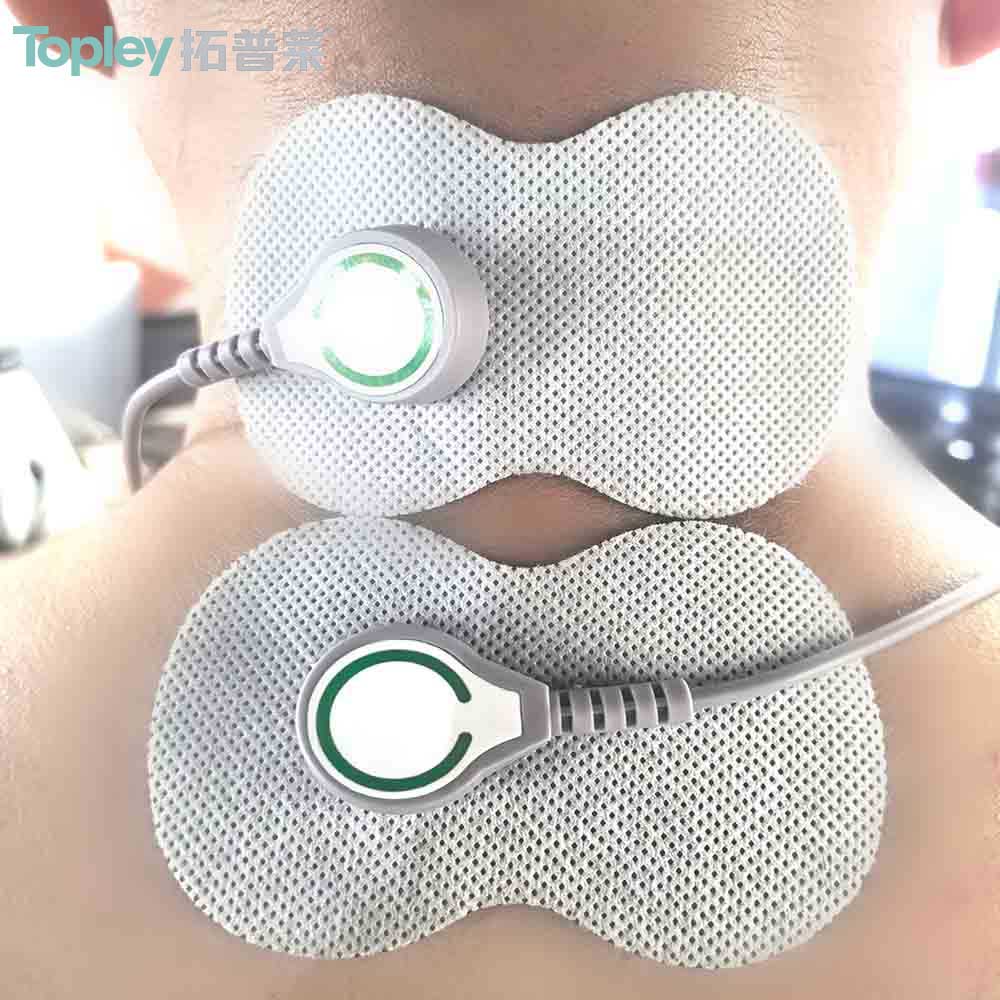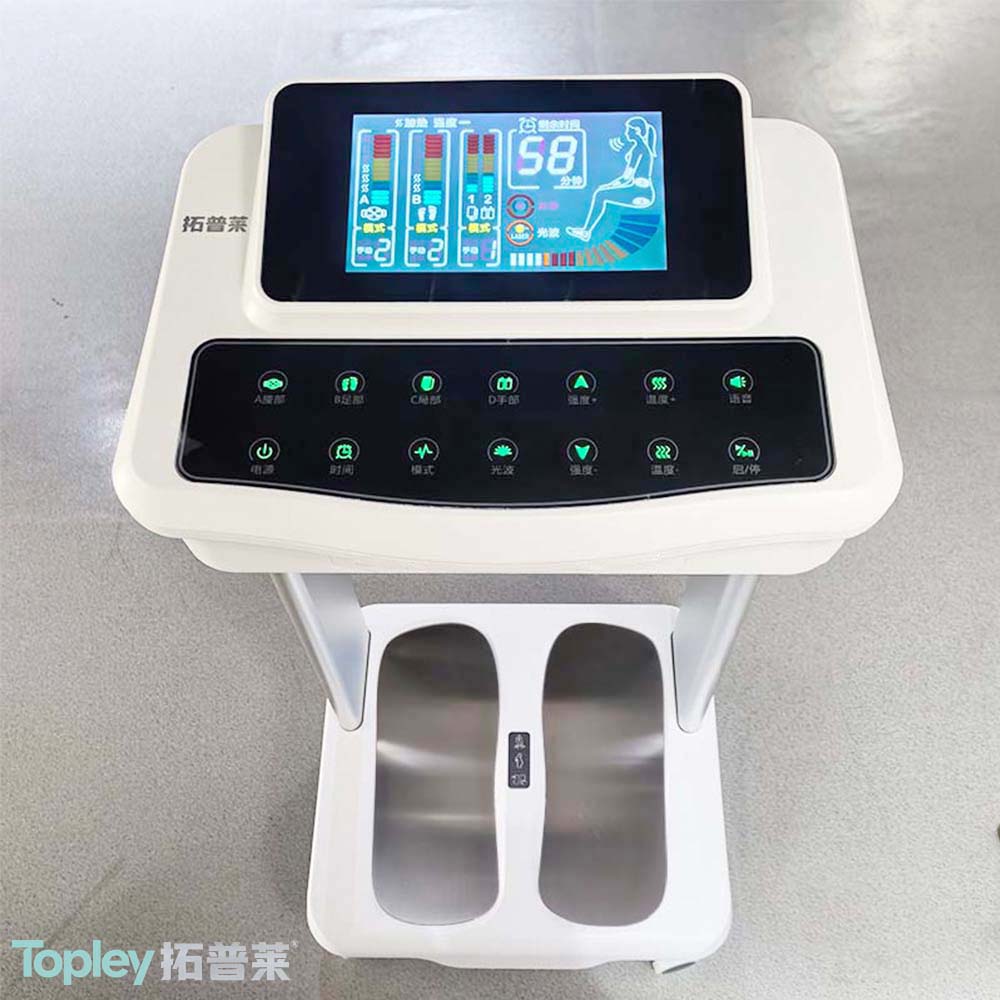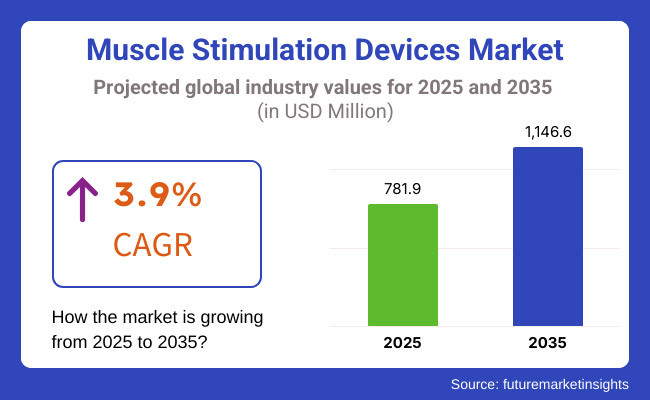The global muscle stimulation devices market is experiencing unprecedented growth, driven by technological innovations, rising healthcare awareness, and an aging population seeking non-invasive treatment solutions. As we look toward the next decade, this comprehensive analysis organized by electrotherapy machine supplier hzminsheng.com explores the market dynamics, regional trends, and growth opportunities that will shape the industry from 2025 to 2035.
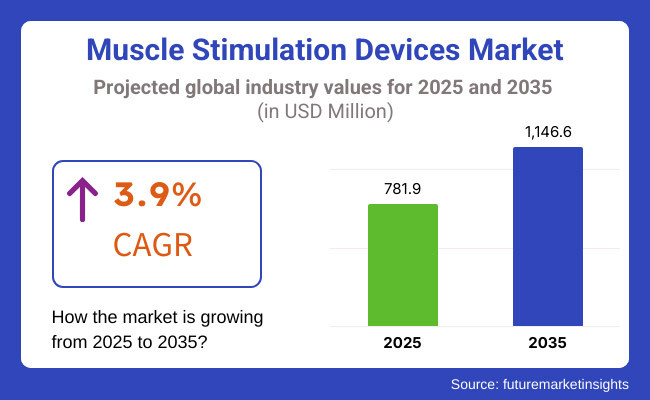
Market Overview and Growth Projections
The muscle stimulation devices market represents a rapidly expanding segment of the medical device industry, valued at USD 781.9 million in 2025. Industry analysts project robust growth with a compound annual growth rate (CAGR) of 3.9% throughout the forecast period, reaching an estimated USD 1,146.6 million by 2035.
This growth trajectory reflects the increasing adoption of electrical stimulation therapies across multiple applications, including pain management, rehabilitation, sports recovery, and neurological disorder treatment. The market's expansion is particularly noteworthy given the global shift toward non-pharmacological treatment options and the rising preference for home-based healthcare solutions.
Key Market Drivers
Several fundamental factors are propelling market growth:
Rising Musculoskeletal Disorders: The increasing prevalence of conditions such as arthritis, lower back pain, and sports-related injuries creates sustained demand for effective therapeutic interventions.
Technological Advancements: Innovations in wireless connectivity, smartphone integration, and AI-powered personalization are making muscle stimulation devices more accessible and effective.
Aging Demographics: The growing elderly population worldwide requires specialized pain management and rehabilitation solutions, driving demand for muscle stimulation technologies.
Sports Medicine Integration: Professional athletes and fitness enthusiasts increasingly rely on muscle stimulation devices for recovery, performance enhancement, and injury prevention.
Technology Evolution and Innovation Trends
The muscle stimulation devices market is undergoing a significant technological transformation, with several key innovations reshaping the industry landscape.
Smart Device Integration
Modern muscle stimulators are evolving beyond traditional standalone units to become sophisticated, connected devices. The integration of wireless technology and mobile applications allows users to control their devices remotely, customize treatment protocols, and track progress over time. This connectivity enhances user compliance and enables healthcare providers to monitor patient progress remotely.
Artificial Intelligence and Personalization
AI-enabled muscle stimulators represent the next frontier in therapeutic device development. These advanced systems can analyze user responses, adjust stimulation parameters automatically, and provide personalized treatment recommendations based on individual patient profiles and treatment outcomes.
Wearable Technology Advancement
The trend toward miniaturization and wearability continues to gain momentum, with manufacturers developing increasingly compact and discreet devices. These wearable muscle stimulators enable continuous therapy for chronic pain patients and rehabilitation needs, improving treatment adherence and outcomes.
Biofeedback Capabilities
Next-generation devices incorporate enhanced biofeedback systems that monitor muscle response and automatically adjust stimulation parameters for optimal therapeutic effect. This real-time adaptation ensures consistent treatment efficacy while minimizing user intervention.
Product Segment Analysis
The muscle stimulation devices market encompasses several distinct product categories, each serving specific therapeutic applications and user needs.
Neuromuscular Electrical Stimulator (NMES)
NMES devices dominate the market due to their widespread acceptance in rehabilitation and muscle re-training applications. These devices deliver electrical impulses that cause targeted muscle contractions, making them invaluable for:
- Post-surgical recovery and rehabilitation
- Muscle strengthening and conditioning
- Prevention of muscle atrophy
- Spinal cord injury rehabilitation
- Stroke recovery programs
The NMES segment benefits from continuous technological improvements, including wireless connectivity, programmable protocols, and enhanced user interfaces that make these devices more accessible to both healthcare professionals and home users.
Transcutaneous Electrical Nerve Stimulator (TENS)
TENS devices represent a growing segment focused primarily on non-invasive pain management. These units deliver low-voltage electrical currents through the skin to interrupt pain signals and stimulate endorphin release. Key applications include:
- Chronic pain management (arthritis, fibromyalgia)
- Postoperative pain relief
- Sports injury recovery
- Lower back pain treatment
- Drug-free pain management alternatives
The TENS market is experiencing particular growth due to increasing concerns about opioid dependency and the rising demand for pharmaceutical-free pain management solutions.
Application Segment Overview
Pain Management Applications
Pain management remains the largest application segment, driven by the global prevalence of chronic pain conditions and the growing preference for non-pharmacological treatments. The segment encompasses:
- Chronic musculoskeletal pain
- Postoperative pain management
- Sports-related injuries
- Neuropathic pain conditions
- Age-related joint pain
The shift toward holistic pain management approaches, combined with growing awareness of opioid risks, continues to fuel demand for muscle stimulation devices in this segment.
Neurological and Movement Disorder Management
This rapidly growing segment focuses on rehabilitation and functional improvement for patients with neurological conditions. Applications include:
- Stroke rehabilitation and recovery
- Spinal cord injury treatment
- Parkinson's disease management
- Multiple sclerosis symptom relief
- Cerebral palsy intervention
Advanced technologies such as functional electrical stimulation (FES) and robotic-assisted therapies are expanding treatment possibilities and improving patient outcomes in neurological rehabilitation.
Regional Market Analysis
North America: Market Leadership
North America maintains its position as the largest regional market, accounting for the highest market share due to several favorable factors:
- Advanced healthcare infrastructure and high technology adoption rates
- Significant healthcare expenditure and insurance coverage
- Large aging population with high incidence of musculoskeletal disorders
- Strong focus on sports medicine and rehabilitation
- Favorable regulatory environment for medical device innovation
The United States specifically drives regional growth with an estimated CAGR of 3.6%from 2025 to 2035, supported by increasing healthcare investments and growing awareness of non-invasive treatment options.
Europe: Innovation and Integration
The European market demonstrates steady growth driven by healthcare system integration and technological innovation. Key characteristics include:
- Strong emphasis on physiotherapy and rehabilitation services
- High adoption of advanced medical technologies
- Supportive healthcare policies and reimbursement systems
- Leading role in medical device research and development
Germany leads the European market with a projected CAGR of 3.2%, benefiting from its robust medical device industry and comprehensive healthcare system.
Asia-Pacific: Fastest Growth Region
The Asia-Pacific region exhibits the highest growth potential due to rapidly developing healthcare infrastructure and increasing healthcare awareness. Growth drivers include:
- Rising middle-class population with improved healthcare access
- Increasing urbanization and lifestyle-related health issues
- Government investments in healthcare modernization
- Growing sports and fitness culture
China and India represent the most significant growth opportunities, with projected CAGRs of 5.6% and 5.1% respectively, driven by economic development and expanding healthcare infrastructure.
Emerging Markets
Latin American markets, particularly Brazil with a 5.4% CAGR, show strong growth potential due to:
- Developing healthcare infrastructure
- Increasing sports medicine awareness
- Growing private healthcare sector
- Rising incidence of lifestyle-related disorders
Competitive Landscape and Market Leaders
The muscle stimulation devices market features a competitive landscape with several established players and emerging companies driving innovation and market expansion.
Market Share Analysis
The market demonstrates moderate concentration with leading companies holding significant market shares:
| Company | Market Share |
|---|---|
| DJO Global, Inc. | 21.4% - 23.7% |
| Zynex, Inc. | 15.0% - 16.9% |
| Omron Healthcare, Inc. | 10.7% - 13.2% |
| NeuroMetrix, Inc. | 8.6% - 9.5% |
| Other Companies | 34.7% - 36.6% |
Key Player Strategies
DJO Global leads the market through comprehensive product portfolios covering both NMES and TENS devices, with strong focus on professional healthcare markets and continuous R&D investment.
Zynex specializes in non-invasive pain management solutions, emphasizing patient compliance and therapeutic outcomes through innovative device design and support services.
Omron Healthcare focuses on consumer-accessible TENS units, leveraging its strong brand recognition and distribution networks to reach home-use markets.
NeuroMetrix pioneers wearable neuromodulation devices, targeting chronic pain management with AI-driven personalization and advanced monitoring capabilities.
Market Challenges and Constraints
Despite strong growth prospects, the muscle stimulation devices market faces several challenges that could impact expansion:
Regulatory Compliance
Stringent regulatory requirements for medical device approval can delay product launches and increase development costs. Manufacturers must navigate complex approval processes across different regions while ensuring safety and efficacy standards.
Competition from Alternative Therapies
Alternative treatment modalities such as manual physiotherapy, chiropractic care, and pharmaceutical interventions continue to compete for patient preference and healthcare provider recommendations.
Safety and Training Concerns
Device misuse and safety considerations can create skepticism among users and healthcare providers. Proper training and education are essential for maximizing therapeutic benefits while minimizing adverse events.
Reimbursement Variability
Inconsistent insurance coverage and reimbursement policies across different regions and healthcare systems can limit patient access and market penetration.
Growth Opportunities and Future Outlook
Home Healthcare Expansion
The growing demand for home-based healthcare solutions presents significant opportunities for muscle stimulation device manufacturers. Factors driving this trend include:
- Aging population preferring to receive care at home
- Rising healthcare costs driving demand for cost-effective alternatives
- Technological advancements making devices more user-friendly
- Increased patient comfort with self-administered therapies
Sports Medicine and Fitness Integration
Expanding applications in sports medicine and fitness offer substantial growth potential as:
- Professional sports organizations increasingly adopt recovery technologies
- Fitness enthusiasts seek performance enhancement tools
- Athletic training programs integrate muscle stimulation protocols
- Wearable fitness technology markets continue expanding
Emerging Therapeutic Applications
Research into new therapeutic applications continues to expand market possibilities:
- Cardiovascular rehabilitation programs
- Respiratory muscle training
- Cosmetic and aesthetic applications
- Mental health and wellness integration
Technological Integration
Advanced technology integration will drive future market growth through:
- IoT connectivity and remote monitoring capabilities
- Machine learning algorithms for treatment optimization
- Virtual reality integration for enhanced user experience
- Blockchain technology for secure data management
Sustainability and Environmental Considerations
The muscle stimulation devices market is increasingly focusing on environmental sustainabilitythrough:
Eco-Friendly Design
- Development of rechargeable, long-life battery systems
- Use of sustainable materials in device construction
- Reduction of single-use components and consumables
- Implementation of device recycling programs
Manufacturing Improvements
- Local production to reduce transportation emissions
- Energy-efficient manufacturing processes
- Sustainable packaging solutions
- Circular economy principles in product design
Future Market Projections and Conclusion
The muscle stimulation devices market outlook for 2025 to 2035 presents a compelling growth story driven by technological innovation, demographic trends, and evolving healthcare preferences. The market's projected growth from USD 781.9 million to USD 1,146.6 millionrepresents significant opportunities for manufacturers, healthcare providers, and investors.
Key success factors for market participants include:
- Innovation in device technology and user experience
- Strategic partnerships with healthcare providers and sports organizations
- Regulatory compliance and safety assurance
- Market education and professional training programs
- Sustainable business practices and environmental responsibility
The convergence of aging demographics, technological advancement, and shifting healthcare paradigms toward non-invasive treatments positions the muscle stimulation devices market for sustained growth throughout the forecast period. Companies that successfully navigate regulatory requirements, invest in research and development, and focus on user-centered design will be best positioned to capitalize on emerging opportunities in this dynamic market.
As the industry evolves, the integration of artificial intelligence, wearable technology, and personalized medicine approaches will continue to expand the therapeutic potential of muscle stimulation devices, ultimately improving patient outcomes and driving market expansion across diverse global markets.
Last word
If you are looking for electrotherapy machines such as Frequency Electrotherapy Machine, Low Frequency Resonance Activator or Water Treater Terahertz PEM Therapy Machine supplier, hzminsheng.com is the best supplier and manufacturer you can find in the market.
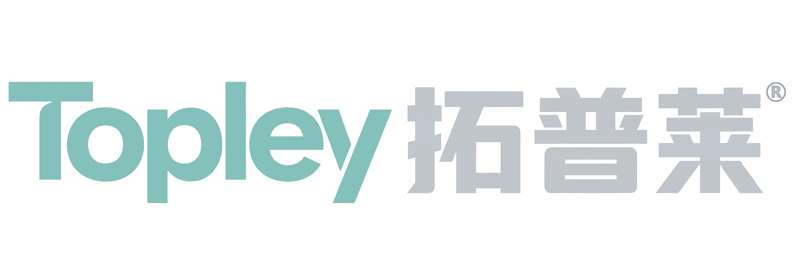
 info@hzminsheng.com
info@hzminsheng.com


